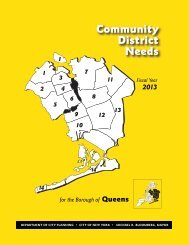Palm Oil Buyers Scorecard
WWF_Palm_Oil_Scorecard_2016
WWF_Palm_Oil_Scorecard_2016
You also want an ePaper? Increase the reach of your titles
YUMPU automatically turns print PDFs into web optimized ePapers that Google loves.
PALM OIL BUYERS SCORECARD:<br />
THE JOURNEY SO FAR<br />
WWF published its first <strong>Palm</strong> <strong>Oil</strong> <strong>Buyers</strong><br />
<strong>Scorecard</strong> in 2009, a time when CSPO<br />
was new on the market and was in<br />
danger of faltering as initial demand did<br />
not meet supply. There was very little<br />
transparency around corporate use of<br />
palm oil.<br />
This first <strong>Scorecard</strong> showed that few<br />
companies were making commitments to<br />
CSPO, and of those that were, far too few<br />
were taking even the basic steps to keep<br />
them, such as working out how much<br />
palm oil they were using. The <strong>Scorecard</strong><br />
played an important role in jumpstarting<br />
the market for CSPO, and helping to spur<br />
a drive for greater transparency in the<br />
industry.<br />
68<br />
100<br />
ASSOCIATED<br />
BRITISH FOODS<br />
IMUSA DOLUPTATIOS<br />
VOLORE EICIIS IMUS<br />
A AUT ET AUT QUI.<br />
DAE COMNIS<br />
CORROVIDUNT AD<br />
Our next <strong>Scorecard</strong> in 2011 assessed a<br />
greater number of companies. While<br />
supply of and demand for CSPO<br />
had increased markedly, still only<br />
around half of CSPO supply was being<br />
Ad mos ipsapic<br />
tatecatum aut<br />
quo que am<br />
purchased and claimed as CSPO. This<br />
was, and still is, used as an excuse<br />
by growers not to pursue RSPO<br />
certification for additional land.<br />
Building on our previous <strong>Scorecard</strong>s, WWF’s 2016<br />
<strong>Scorecard</strong> aims to bring into sharp focus which<br />
companies have met their commitments on palm oil –<br />
and which are falling behind.<br />
Many users of palm oil set 2015 as their<br />
target for reaching 100 per cent CSPO.<br />
With the deadline two years away, WWF<br />
helped focus the attention of these<br />
companies – and their customers – on<br />
whether they were making enough progress.<br />
For the European companies, we also<br />
took a closer look at which of the RSPOapproved<br />
supply chain options palm oil<br />
buyers were using, with the objective of<br />
promoting faster and greater uptake of<br />
segregated CSPO.<br />
WWF chose to wait until 2016 to issue<br />
this latest <strong>Scorecard</strong>. We felt it was<br />
crucial to score companies on the actions<br />
they took in 2015 – the milestone year by<br />
which many frontrunners promised to<br />
have their entire palm oil supply certified.<br />
So which companies actually followed<br />
through? Which stalled or pushed back<br />
their deadlines?<br />
2009 2011 2013 2016<br />
As in 2013, this <strong>Scorecard</strong> looks at the<br />
supply chain choices that companies are<br />
using when they buy CSPO. We have scored<br />
many of the brands on their progress<br />
toward buying only CSPO that comes from<br />
fully segregated supply chains.<br />
The 2016 <strong>Scorecard</strong> includes several new<br />
countries, evaluating key retailers and<br />
brands from Poland and Canada for the<br />
first time.<br />
13<br />
WWF PALM OIL BUYERS SCORECARD 2016




